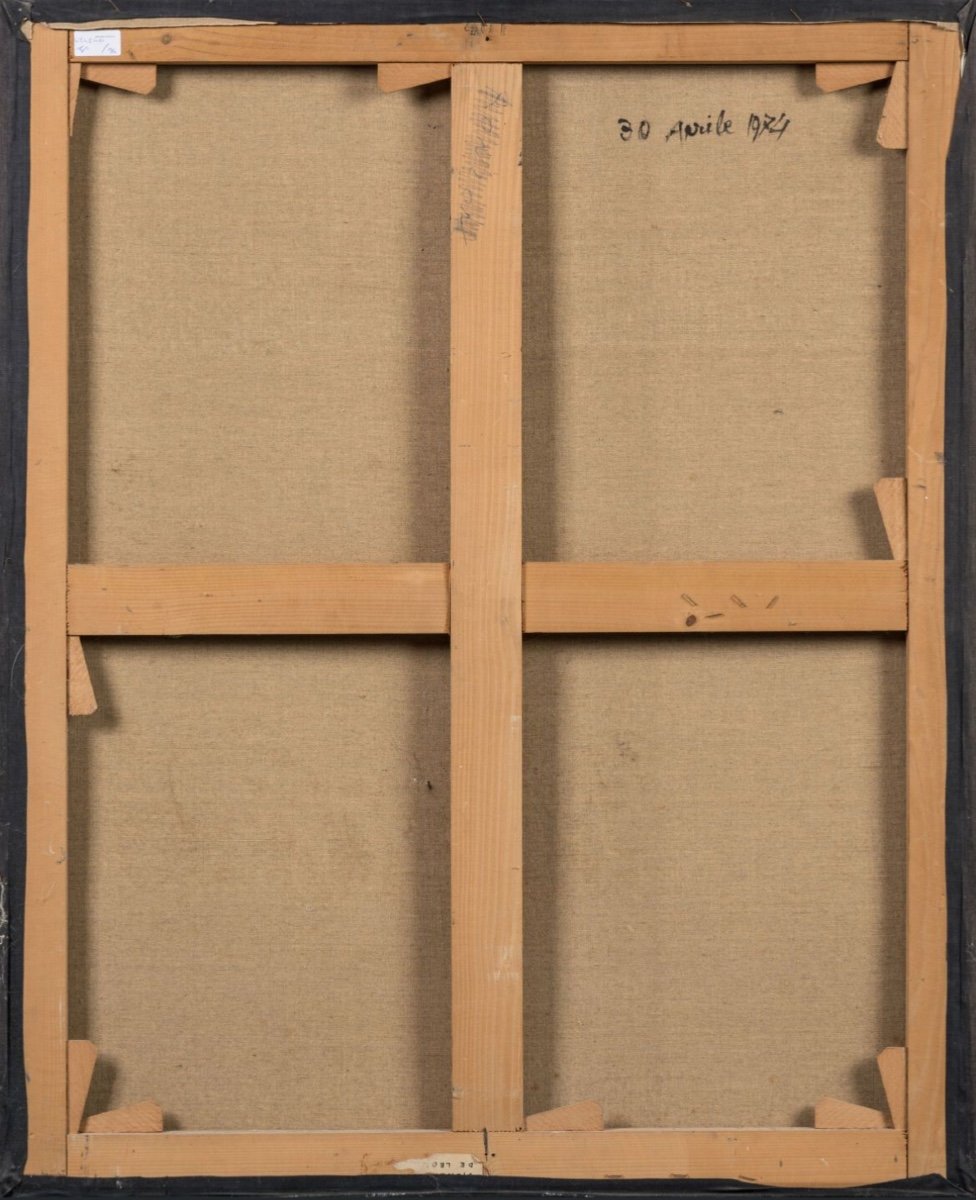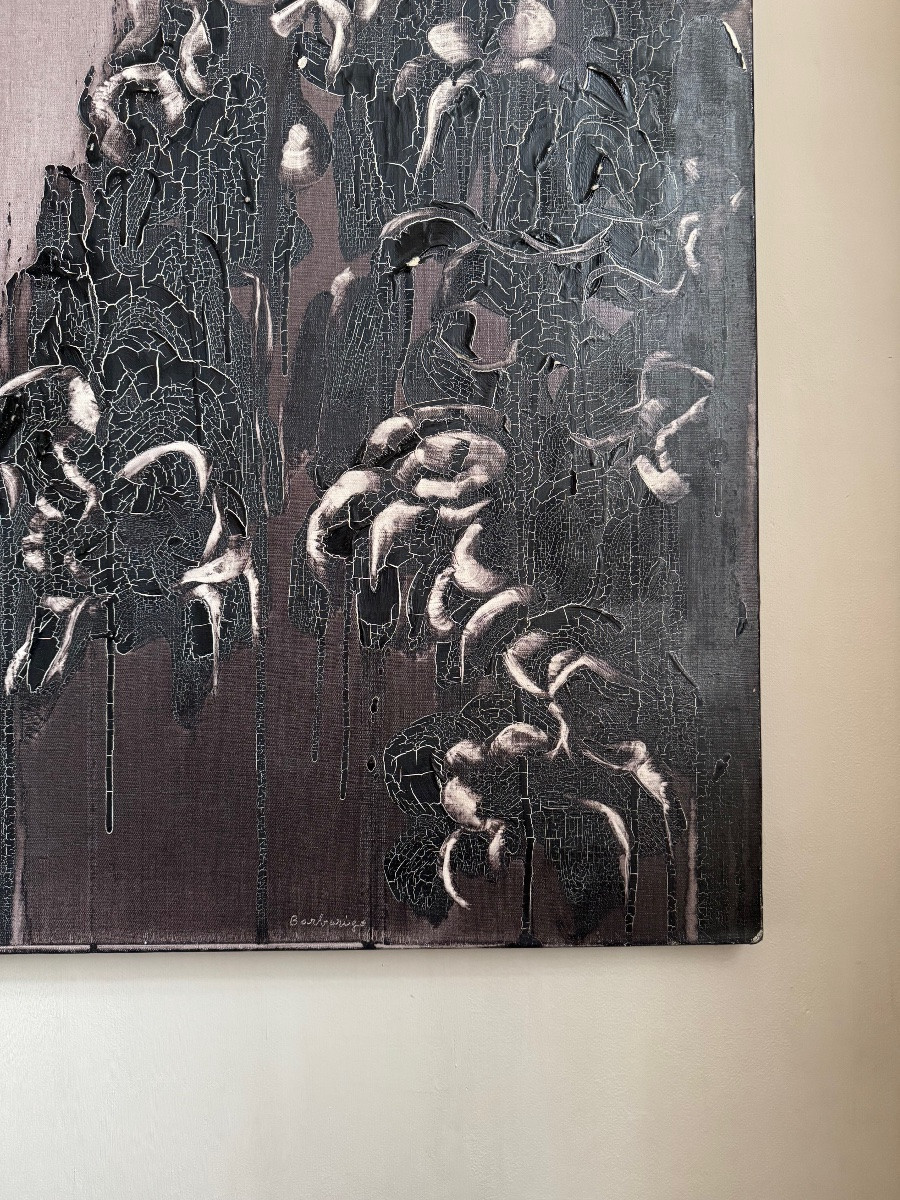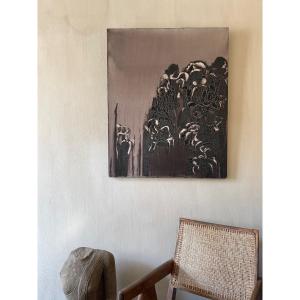Untitled, 30 April 1974.
Oil on canvas.
Signed lower middle.
Dated on the back.
101x81cm.
Small marks in the centre and top left.
Ida Barbarigo (1914-2000) was an Italian artist known for her paintings and drawings. She was born in Venice, a city with a rich artistic tradition, which probably influenced her work and artistic career.
Barbarigo began her artistic training at the prestigious Venice Academy of Fine Arts, where she developed her artistic skills. Her work is influenced by the abstract and geometric movements that dominated the twentieth century, particularly after the Second World War, when abstraction was a major feature of the art world in Italy and elsewhere in Europe.
She was initially influenced by the 'New Objectivity' and geometric abstraction that emerged in Italy after the war, but soon developed her own style. Her works often contain elements of geometric form, strong colour contrasts and symbolic compositions.
Ida Barbarigo has often been associated with abstract art, but her style has varied over the years, ranging from figurative to more abstract works. Her work focuses not only on experimenting with colour and form, but also on exploring emotion and symbolism. She was seen as an artist who worked in depth both visually and conceptually, often striving to convey emotion and dynamism through simple geometric elements.
Her work is influenced by the abstract artists of her time, but also by more traditional Italian painting, giving it a unique balance between the old and the new.
Although Ida Barbarigo has remained relatively unknown compared to some of her male contemporaries, her contribution to post-war Italian art has not gone unnoticed. Her work reflects the wider artistic changes in post-war Italy, where the division between figurative and abstract art became increasingly blurred and artists began to experiment with new forms and techniques.
Today, Ida Barbarigo is increasingly recognised by art historians who examine her contributions to twentieth-century abstract art. She is seen as an example of a woman artist paving the way for other women at a time when the art world was often dominated by men. Her work provides a valuable insight into the development of post-war Italian art and remains an important part of the history of modern painting.





























 Le Magazine de PROANTIC
Le Magazine de PROANTIC TRÉSORS Magazine
TRÉSORS Magazine Rivista Artiquariato
Rivista Artiquariato
